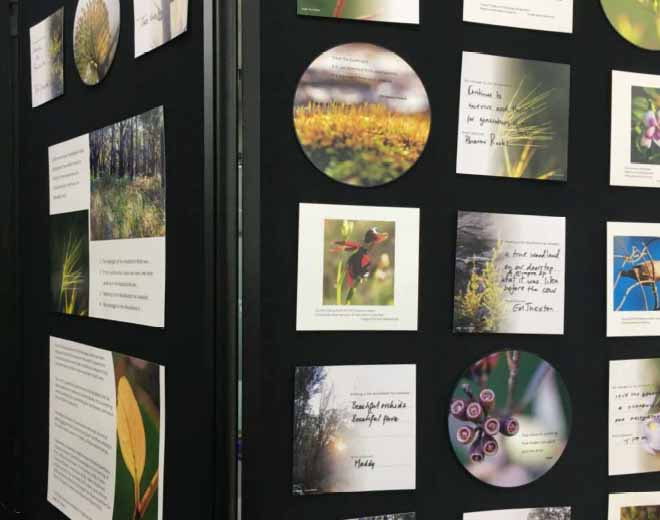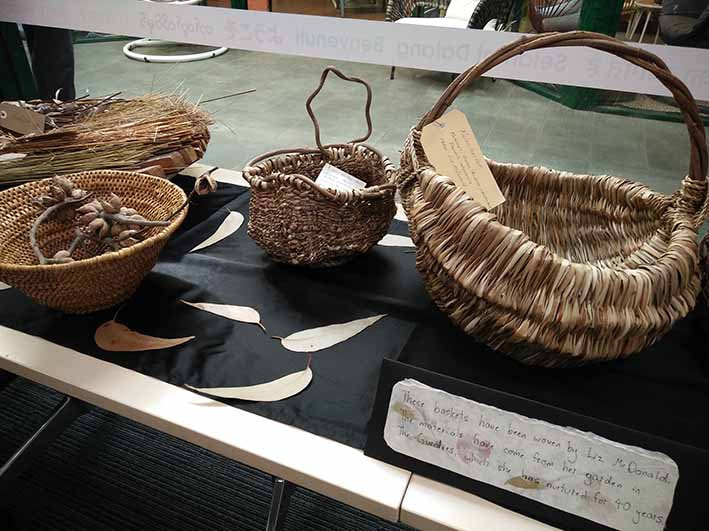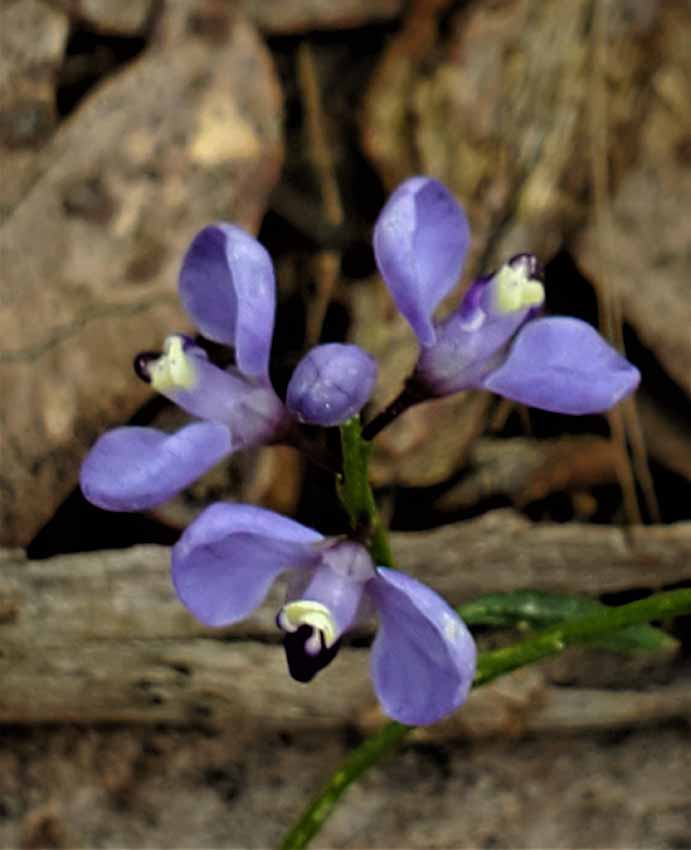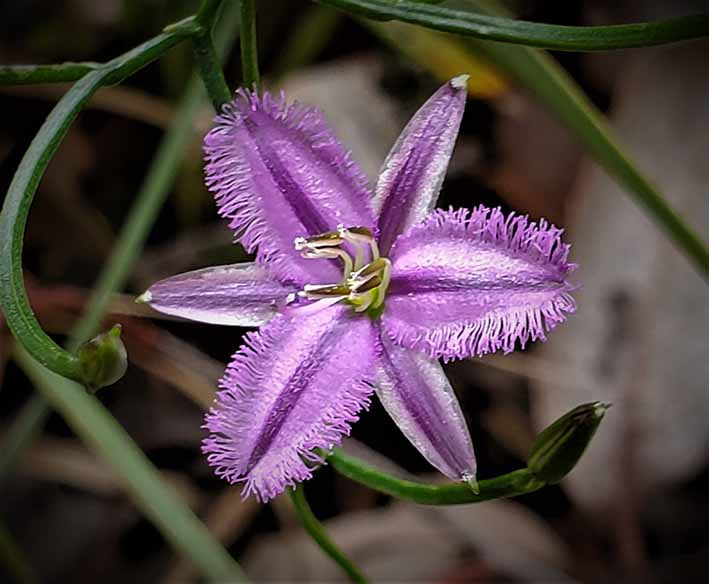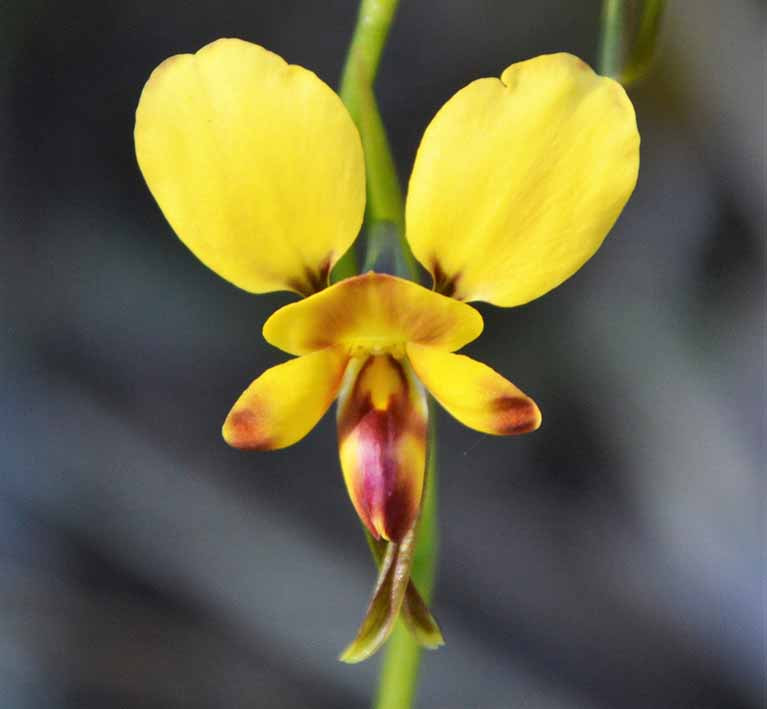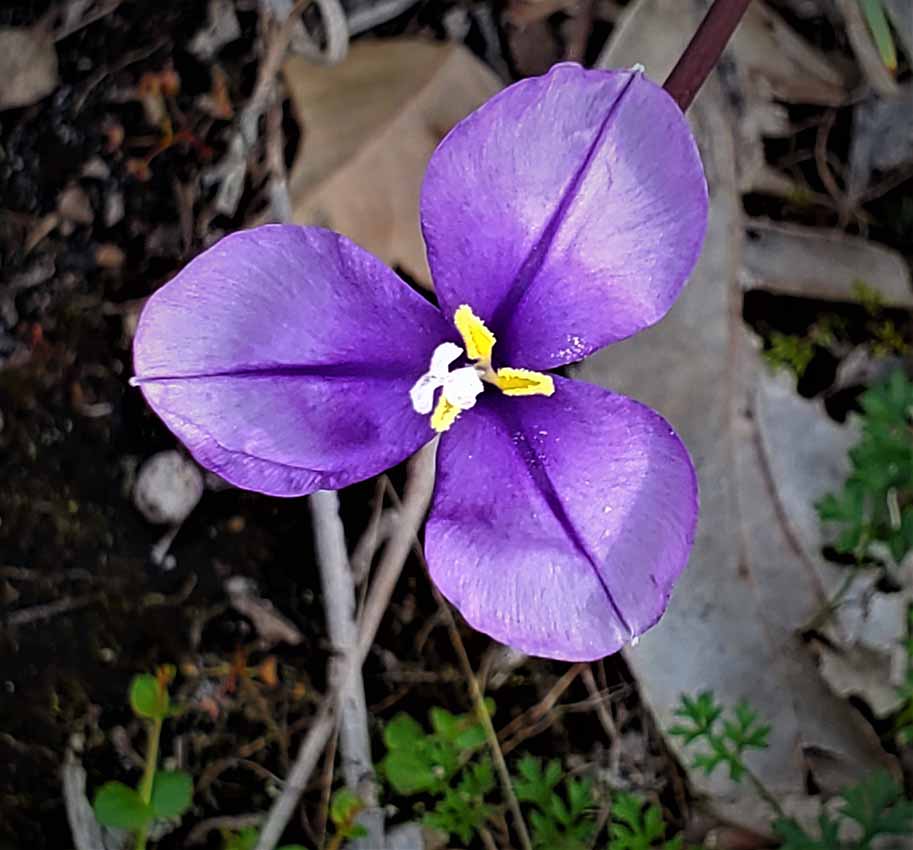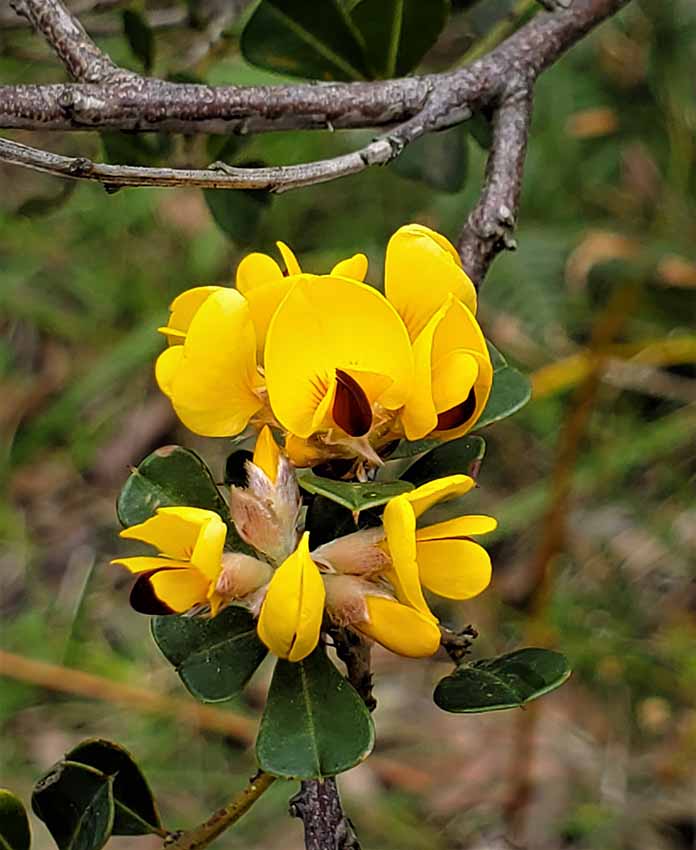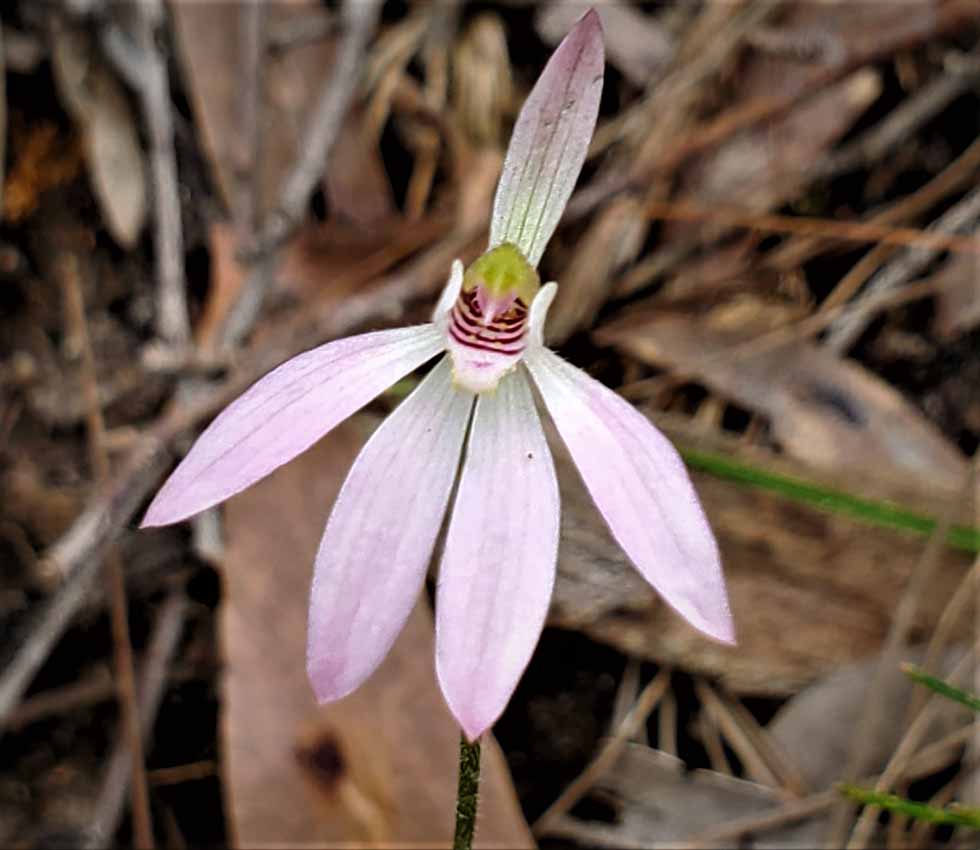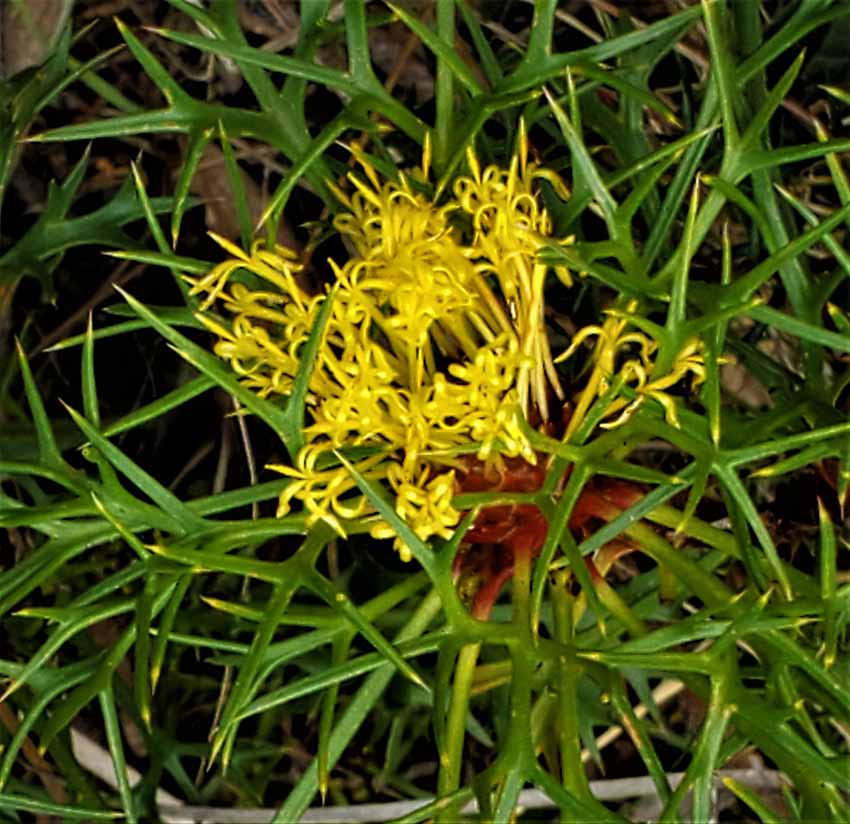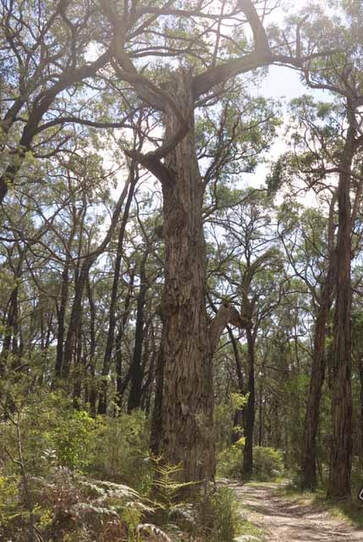 Linda Cuttriss joins a woodlands walk and finds a new kind of
Linda Cuttriss joins a woodlands walk and finds a new kind of magic in the hills above Grantville and The Gurdies.
OVER the ages, in countries around the world, woodlands and forests have evoked stories of magic, mystery and mystical beings. Britain and Europe have fairies and elves. Indigenous Australians have Little People and the Yowie or Big Foot.
When I was little, travelling with my parents and brothers along the Bass Highway from Inverloch to Melbourne and back, I would get a spooky feeling along that thickly wooded stretch of road around Grantville and The Gurdies. There were stories of strange things seen by the roadside at night.
I am no longer spooked as I drive along that stretch of road but what lies behind those trees has remained a mystery. So, when Save Western Port Woodlands sent out word of guided woodland walks I jumped at the chance to discover what is hiding in there.
Dunbabbin Road car park and picnic area
Gurdies Nature Conservation Reserve, The Gurdies.
We meet at Dunbabbin Road picnic area where I am drawn to the expansive view across green pastures and bushland to French Island and Western Port. Someone calls Crimson Rosella! and I rush over to where the others are looking up into the trees.
Our group of ten follows Gil along a wide path into an open woodland, lightly timbered with tall straggly eucalypts whose branches reach out in awkward angles towards each other. Their bark has been singed and some have long streaks of bright yellow lichen. Beneath the trees are sprays of bracken fern, clumps of lomandra grass and delicate shrubbery.
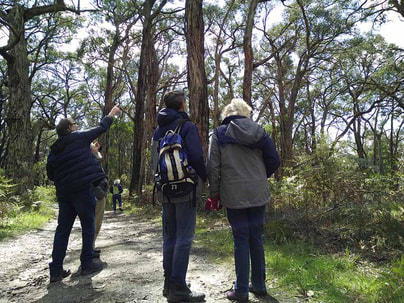
Twittering, chirping and whistling sounds start up around us and I spot little brown birds flitting between the trees and shrubs. Gill points to a dead branch a good height from the ground. There’s a Jackie winter with its white eyebrow he says.
I’m sure Gil has no magical powers to conjure the birds from their hiding places but he does know that if we stand quiet and still the birds will emerge. He also knows where we are likely to find them. It’s is a good spot here he says, and I ask him why. There’s lots of flowers and insects here.
Soon Gill is rapidly calling out bird names and pointing from branch to branch. There’s a white-naped honeyeater, a brown-headed honeyeater. And a yellow-faced honeyeater over there. He explains that the honeyeaters are here because the smaller shrubs are flowering. There are no wattlebirds because the larger flowers, like banksias and grevilleas, are not in flower. Nearby I see a small silver banksia, its cones brown and dried from last year’s flowering.
| We all watch a grey fantail boldly zig zagging around the low shrubs, twisting and turning this way and that as it flutters through the low shrubs, catching insects in the air, briefly settling on a perch then taking off again. Gill explains that when you’re walking through the bush you put up insects and give them a feed. Fantails are also territorial he says, so they’ll show themselves and declare their territory. Further away through the trees we see a kookaburra float confidently between the higher branches. Woodlands are important for kookaburras as they need trees big enough to contain their nests and open patches for hunting snakes, lizards and rodents as well as insects. A jet black little raven flies through the trees some distance away. While we often see them in farmland or eating carrion from the road, little ravens actually favour woodlands where they feed on large quantities of insects from foliage and branches as well as from the ground. A superb blue wren bops along the ground pecking for insects. With my eyes focussed on the ground, I spot a small cluster of tiny purple flowers amongst the leaf litter. They are wax lipped orchids and make the delicate pile of dried leaves, twigs, dried bracken fern and shredded bark look like a work of art. I contemplate all the insects and other small critters living in that pile and moving within the soil beneath. Every part of this woodland is important from the top of trees to the ground. Every place provides a niche for birds and other creatures to live and feed and breed. | An exhibition of photos and reflections from the woodland walks organised by Save the Western Port Woodlands group. Curated by Laura Brearley and Terry Melvin. Includes baskets woven by Liz McDonald from plant materials indigenous to the woodlands. Wonthaggi Library until late November. Exhibition preview |
Gurdies Nature Conservation Reserve, The Gurdies
Our walk begins at the roadside rest area on Bass Highway opposite Pioneer Bay. We follow Marg in single file along a narrow path into the bush. Within moments Marg calls out the name of an orchid but I’m at the end of the line and cannot hear. We continue on, eyes focussed on the ground beside the path and soon there are wildflowers everywhere, sprinkled through the leaf litter, springing up between fallen branches and amongst the soft grasses and spiky green rushes.
| We gather around Marg as she identifies a love creeper with blue flowers twining across the ground, a guinea flower with tiny yellow flowers, the purple flowers of a fringe lily with its pretty fringes and a stunning wax lip orchid in a deep shade of mauve. A few metres further along is a cluster of milkmaids, pretty white flowers with flushes of pink and nearby a purple flag emerges proudly on a long stem from a tuft of strappy leaves. I have never seen so many wildflowers in one place before and our walk has just begun. The path widens and the group spreads out, some keeping up with Marg, others lagging behind to stop for a closer look. Some are bending over to take a photo, others are pointing and talking, sharing the joy of these tiny beauties with the person nearby. Someone asks what’s this one here? Oh, a mayfly orchid enthuses Marg. Well done she says, they’re so hard to spot. We gather together to look closely at this unusual small, dark-reddish-brown orchid with long spiky tendrils. A little further along there’s a squeal of delight from Marg (one of many more to come). Ah, a donkey orchid! I’ve been waiting to see one of these. The group quickly reforms to marvel at the distinctive yellow flower with deep red markings. Up close we can see it has two upright ear-like petals that resemble donkey ears. I hold back and stop for a moment to lift my eyes from the ground and take in the woodland around me. The open spaces between the trees give a feeling of peace and contemplation. A kookaburra laughs from far away. A grey shrike-thrush sings its melodious song. A cuckoo repeats its mournful call. The wind whooshes through the canopy. A leaf flutters to the ground. The leaning and twisting shapes of tree trunks floating in a sea of tufted grasses with the white flowers and wispy foliage of the shrubbery feels like being in a watercolour painting. Our little group has become quite a team, calling out when we spot something new for Marg to identify and sometimes learning from each other. Blue damperia spreads lightly through the low shrubs. There are tiny native violets, yellow everlasting daisies, blue stars and a red flowered running postman. There’s another squeal of delight from Marg. Oh, you’ve found it. A hare orchid. I’ve been looking for it all the way up. It’s hard to find because it’s so small, but it’s so delightful. They come and go so quickly. A low rumbling sound and beeping of a reversing truck drifts through the trees and disturbs our cheerful mood. That’s from the sand washing facility says Marg. It is an ominous sound that reminds me that the Western Port Woodlands are under increasing threat from more sand mining. But the thrill of finding more tiny treasures overcomes the unsettling intrusion and I hear Marg call out again. Ah, yes that’s a white caladenia. Beautiful. Well spotted. And there’s some egg and bacon. Ah, and beautiful blue flax lilies. Someone calls and points towards another beauty. Look at the colour, the design of it. There’s another one here. Oh, wonderful, an early Nancy says Marg as she names the pretty white flower with the deep purple band around the base of its petals. It is absolutely the best time to wander through here says Marg. We reach the half way point of our walk on top of the ridge at Dunbabbin Road picnic area, pass by a huge thicket of prickly Moses wattle in flower where scores of little birds are twittering and follow the path that loops back down the other side of the hill. The woodland changes mood. Becomes darker. The gradient is steeper, the trees taller, the understorey thick with bracken. On one side of the path the land slopes steeply down to a creek and rises on the far side to a high ridge where a great reddish-orange slash shows through the trees. Monsters have been here and left a ghastly scar. Trucks rumble and a machine growls from the sand cleaning facility below. We can’t see it but Marg shows us piles of white sand and bands of black sludge in a photo she has taken from above the site. The path brings us down quickly now and glimpses of Western Port appear through the trees. And there is one more treat in store. A small patch of yellow flowering isopogon, commonly known as cone flowers, is a rare treasure to find in the wild around here. Our planned two-hour walk has stretched to three hours and as we approach the picnic area where our walk began, I overhear remarks from my fellow walkers. We’ve had exercise and education. And socialising. A Nature immersion. |
The mythical beings of the ancient folklore were believed to guard and protect their woodland homes. But the growling beasts I heard in the woodland have no such benevolent intentions. With proposals for massive expansion of sand extraction in the Western Port Woodlands more and more monstrous machines might soon be tearing all this magic down.
No revegetation program could ever replicate the diversity of trees, shrubs, creepers, orchids, lilies, ferns, rushes, sedges, fungi, algae and mosses that play a critical role in the woodland’s rich web of life. Vegetation offsets elsewhere won’t replace the powerful owls, southern brown bandicoots, echidnas, snakes and other birds and wildlife that live here.
As I travel back home to Phillip Island, along the road I have travelled so many times before, I think back on the incremental losses I have witnessed, year on year, as swathes of bush have disappeared. I have seen clusters of houses spring up between the thick greenery, seen the waters of Western Port come into view and watched roadside vegetation shrink to a thin curtain barely concealing cleared paddocks and exposed piles of sand. Please don’t tell me we’ll soon lose all that is left.
Email [email protected] for updates and news of woodland walks.
